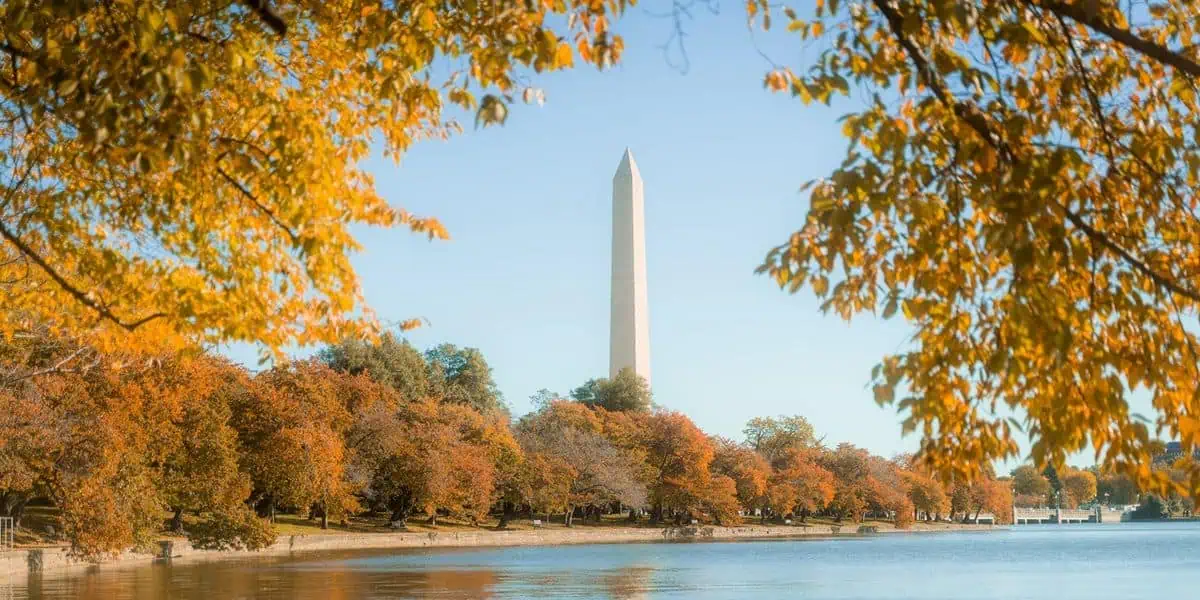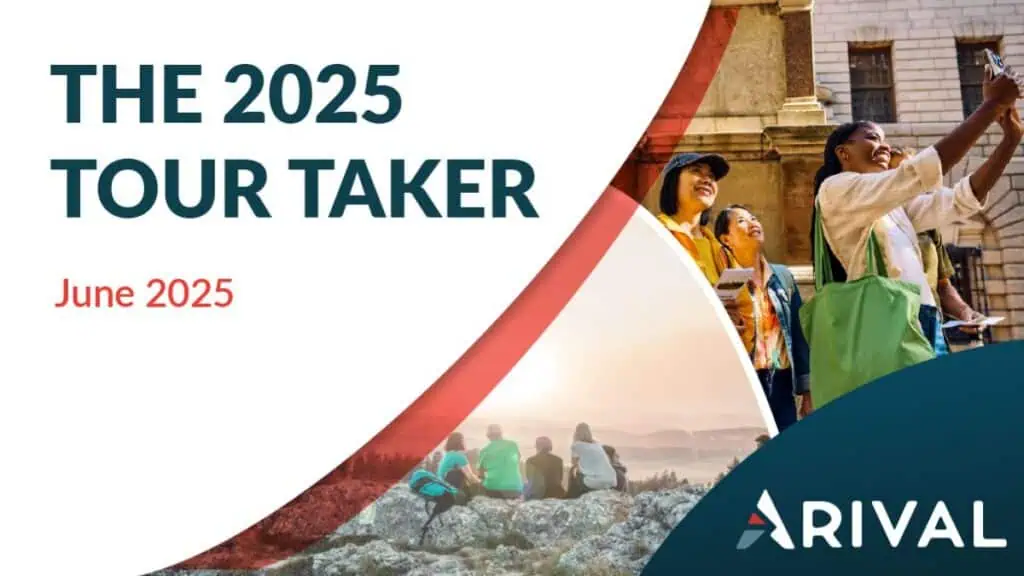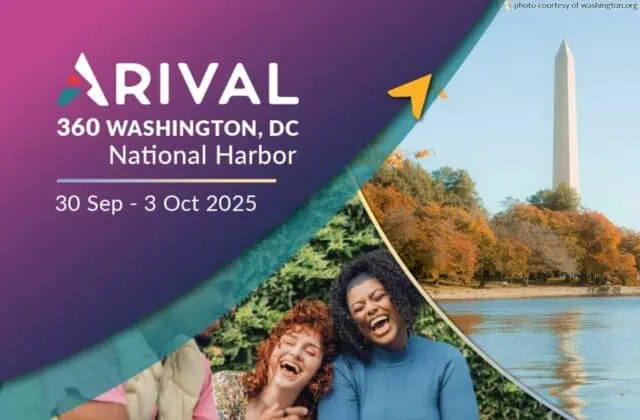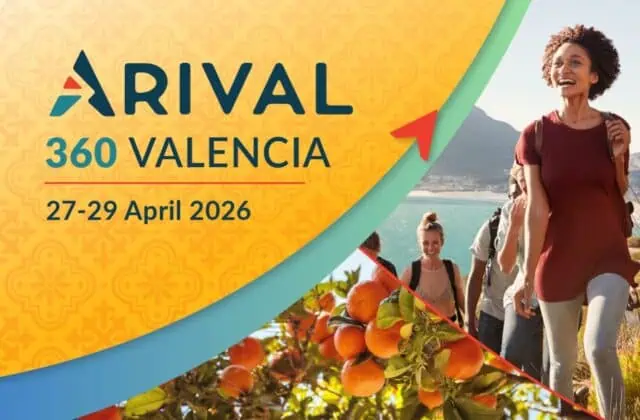
The Multi-Attraction Pass (2021)
A no-nonsense guide to understanding the attraction pass market and help tour, activity, and experience operators assess if multi-attraction passes are right for them.

Summary
Multi-Attraction Passes (MAP) offers tour and attraction operators the opportunity to find new customers – both local and international – that they may not have considered or be able to reach themselves. But there are important caveats to this proposition. Striking up the right relationship with a MAP provider could give operators a boost in both footfall and revenue and a new customer base at this challenging moment for the industry. Still, each business has to decide for themselves if such a partnership is right for them.Arival’s Guide to Multi-Attraction Passes will help you determine:
- What are MAPs, and how they work
- How to decide if your attraction is right for a MAP pass
- How to identify, contact, and start a collaboration with a MAP provider in your city
- How to make the most out of your partnership with a MAP provider
Table of Contents
Why Read This Arival Guide?
MAP Market Overview
The Size of the Market
- Terms & Definitions
What is a Multi-Attraction Pass and How Do They Work?
The other reason travelers buy passes: flexibility
The MAP Market, COVID-19, and What’s Next
Questions to Consider before Becoming a MAP Supplier
- Is my tour, attraction, or experience suitable for a MAP scheme?
- Where does your attraction fit in your market – and in different passes?
- Can the commercial terms work for my attraction?
- Can MAP providers help my post-Covid recovery?
- What does the typical MAP customer look like?
- How many MAP customers are you going to get?
- Will MAPs bring me new customers or compete for my existing customers who would book direct?
Conclusion: To MAP or Not to MAP?
DIRECTORY: Profiles of the major pass providers
- Leisure Pass Group
- CityPASS
- iVenture
- The Sightseeing Pass
- Bandwango
- Turbopass
Become an Insider Pro Access member today and get access to the full library of Arival research, plus many other benefits such as free consulting sessions, special discounts and 20% off in-person events, starting from $179 per year.
Included in Free Membership
Included in Arival Pro Membership
The Arival on-demand video library archive
Access to the entire library of over 150 video sessions and webinars
Arival.guides
Short, digestible research & trends reports delivering insights into our industry, such as The Tour Operator Outlook for 2021.
Arival.travel articles
Topical articles about marketing, tech, operator business and operator stories in all areas of tours, activities & attractions & experiences
Job board access
Find a job from our regular listings, post a resume to the talent network and learn strategies from the job resources articles
New webinars
Helpful, instructional sessions covering subjects such as Mastering Facebook Ads, Grow Your Business and How To Work With OTAs — topics to help advance your business.
Discounts on all Arival in-person events
20% Discount on all Arival in-person events (save up to $300)* based on business type
Arival ProShield – Insurance program
Access to tailored insurance solutions by Granite Insurance is available exclusively for Arival Insider Pro Access Members. Insider Pro Access Members also have access to a suite of resources from Granite Insurance including templates, forms and other informative documents.
Insiders Pro Access member exclusive webinars
Paid membership-only webinars to deepen your understanding of important industry topics.
Job postings & talent directory
Post jobs & connect with candidates most applicable to your business.
Private roundtables to connect, learn and engage
Small, focused and intimate discussions exclusive to Arival Insider Pro Access members.
Full access to Arival’s library of in-depth reports
Up to date, deep analysis of tourism topics ranging from Self-guided Tours to Sales & Distribution Trends and Outlooks, based on the data that defines the industry.
The latest on-demand videos
Over 350+ on-demand videos featuring hot topics in tours, activities & attractions
Insider discounts in digital marketing, tech, e-learning, and more
Save money on additional tools, services and learnings you need to run your business. Exclusive to paid members.
At Arival, we believe travel can make the world a better place. Our mission is to establish and inspire a diverse community of individuals and companies in the In-destination Industry by providing opportunities to gain insight, share knowledge and build connections. To make it possible for true collaboration, creativity, innovation, and idea exchange to thrive, we are committed to facilitating a welcoming and respectful community for all. This Conference Code of Conduct shares our community expectations and applies to all attendees, employees, exhibitors, speakers, sponsors, volunteers, and other participants at Arival- produced and sponsored events. We empower all participants in our community to actively engage in creating a friendly, inclusive and safe environment for all.
Arival’s core values include the following, and create an expectation for conduct at our events and in online community spaces:
We demonstrate a deep respect for human beings inside and outside our company and for the communities in which they live.
We value integrity and strive to consistently interact with others in ways that are authentic, ethical, and fair.
We are dedicated to transparency, committing to clear, open and honest communication.
We actively pursue and advocate for inclusion, diversity and representation of varying cultural backgrounds, perspectives and ideas
Arival welcomes people from all cultural backgrounds, and does not discriminate on the basis of race, color, creed, gender (including pregnancy, perceived pregnancy, childbirth, breastfeeding, or related medical conditions), gender identity, religion (including religious dress and grooming), marital status, domestic partner status, genetic information, age, national origin or ancestry, military or veteran status, sexual orientation, physical or mental disability, or any other basis protected by federal, state, or local laws.
Accordingly, participants must refrain from displaying any demeaning, harassing, aggressive, or intimidating behavior or materials that would interfere with others’ experience and participation in our community.
If you witness or are subjected to inappropriate or disruptive behavior or have any other concerns, notify an Arival staff member as soon as possible.
Inappropriate or disruptive behavior will not be tolerated. Arival reserves the right to refuse entry to or remove any party from any event or community space at any time when participation or behavior create a disruption or hinder the event or enjoyment of the event by other participants. All determinations are at the sole discretion of Arival, and the decision of the Arival team will be final. Severe breaches of this Conference Code of Conduct may result in disqualification from participating in future events. Individuals expelled due to violating this Conference Code of Conduct will not be eligible for a refund or other consolation.
If you have questions regarding this Conference Code of Conduct or its implementation, please contact us at [email protected].
Privacy Overview
| Cookie | Duration | Description |
|---|---|---|
| _zcsr_tmp | session | Zoho sets this cookie for the login function on the website. |
| lang | session | LinkedIn sets this cookie to remember a user's language setting. |
| li_gc | 6 months | Linkedin set this cookie for storing visitor's consent regarding using cookies for non-essential purposes. |
| lidc | 1 day | LinkedIn sets the lidc cookie to facilitate data center selection. |
| uesign | 1 month | Zoho sets this cookie for the Visitor Live Chat. |
| UserMatchHistory | 1 month | LinkedIn sets this cookie for LinkedIn Ads ID syncing. |
| yt-player-bandwidth | never | The yt-player-bandwidth cookie is used to store the user's video player preferences and settings, particularly related to bandwidth and streaming quality on YouTube. |
| yt-player-headers-readable | never | The yt-player-headers-readable cookie is used by YouTube to store user preferences related to video playback and interface, enhancing the user's viewing experience. |
| yt-remote-cast-available | session | The yt-remote-cast-available cookie is used to store the user's preferences regarding whether casting is available on their YouTube video player. |
| yt-remote-cast-installed | session | The yt-remote-cast-installed cookie is used to store the user's video player preferences using embedded YouTube video. |
| yt-remote-connected-devices | never | YouTube sets this cookie to store the user's video preferences using embedded YouTube videos. |
| yt-remote-device-id | never | YouTube sets this cookie to store the user's video preferences using embedded YouTube videos. |
| yt-remote-fast-check-period | session | The yt-remote-fast-check-period cookie is used by YouTube to store the user's video player preferences for embedded YouTube videos. |
| yt-remote-session-app | session | The yt-remote-session-app cookie is used by YouTube to store user preferences and information about the interface of the embedded YouTube video player. |
| yt-remote-session-name | session | The yt-remote-session-name cookie is used by YouTube to store the user's video player preferences using embedded YouTube video. |
| ytidb::LAST_RESULT_ENTRY_KEY | never | The cookie ytidb::LAST_RESULT_ENTRY_KEY is used by YouTube to store the last search result entry that was clicked by the user. This information is used to improve the user experience by providing more relevant search results in the future. |
| zc_loc | session | Zoho marketing Automation sets this cookie to store language preferences, potentially to serve up content in the stored language. |
| Cookie | Duration | Description |
|---|---|---|
| SRM_B | 1 year 24 days | Used by Microsoft Advertising as a unique ID for visitors. |
| Cookie | Duration | Description |
|---|---|---|
| _clck | 1 year | Microsoft Clarity sets this cookie to retain the browser's Clarity User ID and settings exclusive to that website. This guarantees that actions taken during subsequent visits to the same website will be linked to the same user ID. |
| _clsk | 1 day | Microsoft Clarity sets this cookie to store and consolidate a user's pageviews into a single session recording. |
| _fbp | 3 months | Facebook sets this cookie to display advertisements when either on Facebook or on a digital platform powered by Facebook advertising after visiting the website. |
| _ga | 1 year 1 month 4 days | Google Analytics sets this cookie to calculate visitor, session and campaign data and track site usage for the site's analytics report. The cookie stores information anonymously and assigns a randomly generated number to recognise unique visitors. |
| _ga_* | 1 year 1 month 4 days | Google Analytics sets this cookie to store and count page views. |
| _gcl_au | 3 months | Google Tag Manager sets the cookie to experiment advertisement efficiency of websites using their services. |
| _hjSession_* | 1 hour | Hotjar sets this cookie to ensure data from subsequent visits to the same site is attributed to the same user ID, which persists in the Hotjar User ID, which is unique to that site. |
| _session_id | 3 days | _session_id cookie stores a unique identifier for a user's session, allowing servers to identify and track user activities within a website or application. |
| _tpapp | 1 month | Trust pulse sets this cookie is used for tracking a unique TrustPulse Session. |
| 663a60c55d | session | Zoho sets this cookie is used to build a sales analytics cookie |
| AnalyticsSyncHistory | 1 month | Linkedin set this cookie to store information about the time a sync took place with the lms_analytics cookie. |
| browser_id | 5 years | This cookie is used for identifying the visitor browser on re-visit to the website. |
| CLID | 1 year | Microsoft Clarity set this cookie to store information about how visitors interact with the website. The cookie helps to provide an analysis report. The data collection includes the number of visitors, where they visit the website, and the pages visited. |
| MR | 7 days | This cookie, set by Bing, is used to collect user information for analytics purposes. |
| siqlsdb | never | Zoho sets this cookie to generate a unique ID for the session. This allows the website to obtain data on visitor behaviour for statistical purposes. |
| SM | session | Microsoft Clarity cookie set this cookie for synchronizing the MUID across Microsoft domains. |
| utsdb | never | Zoho SalesIQ sets this cookie to register data on visitor's website behaviour. |
| vuid | 1 year 1 month 4 days | Vimeo installs this cookie to collect tracking information by setting a unique ID to embed videos on the website. |
| zc_cu | 1 year | Zoho marketing Automation cookie is used to collect information on user preferences and/or interaction with web-campaign content. This is used on CRM-campaign-platform for promoting events or products. |
| zc_cu_exp | 1 year | Zoho marketing Automation cookie is used to collect information on user preferences and/or interaction with web-campaign content. This is used on CRM-campaign-platform for promoting events or products. |
| Cookie | Duration | Description |
|---|---|---|
| ANONCHK | 10 minutes | The ANONCHK cookie, set by Bing, is used to store a user's session ID and verify ads' clicks on the Bing search engine. The cookie helps in reporting and personalization as well. |
| bcookie | 1 year | LinkedIn sets this cookie from LinkedIn share buttons and ad tags to recognize browser IDs. |
| bscookie | 1 year | LinkedIn sets this cookie to store performed actions on the website. |
| fd6b13af5c | session | Facebook sets this cookie to deliver a series of advertisement products, such as real-time bidding from third-party advertisers. |
| fr | 3 months | Facebook sets this cookie to show relevant advertisements by tracking user behaviour across the web, on sites with Facebook pixel or Facebook social plugin. |
| li_sugr | 3 months | LinkedIn sets this cookie to collect user behaviour data to optimise the website and make advertisements on the website more relevant. |
| muc_ads | 1 year 1 month 4 days | Twitter sets this cookie to collect user behaviour and interaction data to optimize the website. |
| MUID | 1 year 24 days | Bing sets this cookie to recognise unique web browsers visiting Microsoft sites. This cookie is used for advertising, site analytics, and other operations. |
| personalization_id | 1 year 1 month 4 days | Twitter sets this cookie to integrate and share features for social media and also store information about how the user uses the website, for tracking and targeting. |
| PREF | 8 months | PREF cookie is set by Youtube to store user preferences like language, format of search results and other customizations for YouTube Videos embedded in different sites. |
| scribd_ubtc | 10 years | Scribd sets this cookie to gather data on user behaviour across several websites and maximise the relevancy of the advertisements on the website. |
| test_cookie | 15 minutes | doubleclick.net sets this cookie to determine if the user's browser supports cookies. |
| ttwid | 1 year | Tiktok sets this cookie to keep track of user authentication and session information. |
| VISITOR_INFO1_LIVE | 6 months | YouTube sets this cookie to measure bandwidth, determining whether the user gets the new or old player interface. |
| VISITOR_PRIVACY_METADATA | 6 months | YouTube sets this cookie to store the user's cookie consent state for the current domain. |
| YSC | session | Youtube sets this cookie to track the views of embedded videos on Youtube pages. |
| yt.innertube::nextId | never | YouTube sets this cookie to register a unique ID to store data on what videos from YouTube the user has seen. |
| yt.innertube::requests | never | YouTube sets this cookie to register a unique ID to store data on what videos from YouTube the user has seen. |
| zc_show | 1 year | Zoho sets this cookie to collect data on visitors' preferences and behaviour on the website and the information is used to make content and advertisements more relevant to the specific visitor. |
| ZCAMPAIGN_CSRF_TOKEN | session | Zoho Maillist Manage sets this cookie to distinguish humans from robots and to generate reliable usage reports for the website. |
| Cookie | Duration | Description |
|---|---|---|
| _cfuvid | session | Description is currently not available. |
| 98bac1f50f | session | No description available. |
| ac09458e72 | session | Description is currently not available. |
| arival-_zldp | 1 year 1 month 4 days | Description is currently not available. |
| arival-_zldt | 1 day | Description is currently not available. |
| BBSTR | 1 month | Description is currently not available. |
| browser_identification | 1 year | Description is currently not available. |
| c72887300d | session | No description available. |
| cee | 3 months | Description is currently not available. |
| cf_clearance | 1 year | Description is currently not available. |
| cookies.js | session | No description available. |
| edd_wp_session | 1 day | No description available. |
| InitialIntent | session | Description is currently not available. |
| li_alerts | 1 year | Description is currently not available. |
| memSessionID | 1 hour | Description is currently not available. |
| msToken | 10 days | Description is currently not available. |
| nevercache-b39818 | session | Description is currently not available. |
| next-i18next | 1 year | No description available. |
| ra_customer_id | 1 month | No description available. |
| racart | 1 year | Description is currently not available. |
| wpf_return_to | 5 minutes | Description is currently not available. |







